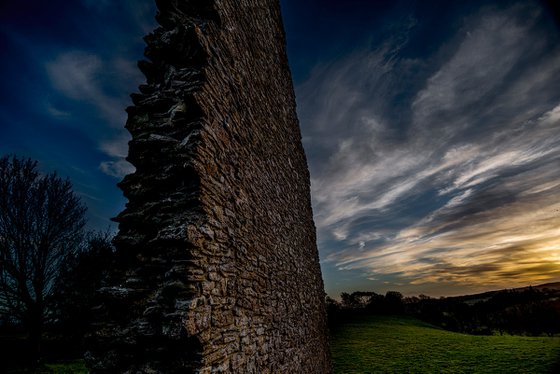- By medium
- By subject
- By budget
- Sales
- Gift cards
- Discover all art
- Artists
- Editors’ picks
- Ideas
Artwork description:
St John's Hospital was built in the final years of the 13th century, shortly after the planned town of Winchelsea was built on the orders of Edward I to replace the old town, which was lost to coastal erosion.
Unlike a traditional hospital, St John's acted as an almshouse, offering accommodation and care to local residents who had fallen on hard times in their old age. Its remit was to care for old and infirm local people, not simply to care for the sick.
St John's was one of three such almshouses in Winchelsea, all of which were located in the southern area of the town. There are no remains of the other two almshouses, Holy Rood and St Bartholomews, both of which stood in the same area of town. It seems likely that St John's was the most important of the three.
It isn't clear exactly when or by whom the hospital was founded, but we do know from the historical record that the brothers and sisters of St John of Winchelsea received rents from properties in Great Yarmouth. These rents totalled 31s 6d in 1292.
The hospital was under the control of the Mayor of Winchelsea, who was compelled to visit at least once a year and had the power to expel any inmate he deemed objectionable. The Mayor along with the jurats (sworn officers) could admit as a hospital resident any poor man or woman who was deemed to have been 'in good love and fame all their time'. In other words, people of good character.
There is no record of when the Hospital was suppressed, but we do know that it was dissolved by 1586 when its lands, amounting to 10 acres, were granted to the town corporation. It's generally assumed that it was Henry VIII who was responsible for it's dissolution during his purge of the monasteries.
Materials used:
Epson fine art inks on Fuji Crystal archive paper with a semi-matt finish.
Tags:
#historical #antiquity #henry viii #british history #winchelseaSt John's Hospital (2016)
Photograph
by Adam Regan
£250
- Photograph on Paper
- From a limited edition of 10
- Size: 60.96 x 40.64 x 0.25cm (unframed) / 55.88 x 35.56cm (actual image size)
- Signed and numbered on the front
- Style: Photorealistic
- Subject: Architecture and cityscapes
Artwork description
St John's Hospital was built in the final years of the 13th century, shortly after the planned town of Winchelsea was built on the orders of Edward I to replace the old town, which was lost to coastal erosion.
Unlike a traditional hospital, St John's acted as an almshouse, offering accommodation and care to local residents who had fallen on hard times in their old age. Its remit was to care for old and infirm local people, not simply to care for the sick.
St John's was one of three such almshouses in Winchelsea, all of which were located in the southern area of the town. There are no remains of the other two almshouses, Holy Rood and St Bartholomews, both of which stood in the same area of town. It seems likely that St John's was the most important of the three.
It isn't clear exactly when or by whom the hospital was founded, but we do know from the historical record that the brothers and sisters of St John of Winchelsea received rents from properties in Great Yarmouth. These rents totalled 31s 6d in 1292.
The hospital was under the control of the Mayor of Winchelsea, who was compelled to visit at least once a year and had the power to expel any inmate he deemed objectionable. The Mayor along with the jurats (sworn officers) could admit as a hospital resident any poor man or woman who was deemed to have been 'in good love and fame all their time'. In other words, people of good character.
There is no record of when the Hospital was suppressed, but we do know that it was dissolved by 1586 when its lands, amounting to 10 acres, were granted to the town corporation. It's generally assumed that it was Henry VIII who was responsible for it's dissolution during his purge of the monasteries.
Materials used:
Epson fine art inks on Fuji Crystal archive paper with a semi-matt finish.
Tags:
#historical #antiquity #henry viii #british history #winchelseaReturns and refunds
We want you to love your art! If you are not completely satisfied with your purchase you can return it free within 14 days, no questions asked. Learn more




